
All about the F-35
PRESS RELEASE
What does the F-35 do?
Before we get into the parts, let’s talk about the plane. It has an enormous job to do. The U.S. military is counting on the F-35 to replace several fighters including the Air Force’s F-16s, the Navy’s and Marine Corps’ F/A-18s, the Marines’ AV-8B Harriers and the UK Harrier GR7s and Sea Harriers. That means it has to excel at air-to-air combat, carry out air-to-ground precision strikes in all weather, fly stealthily into contested areas, have unsurpassed “situational awareness,” or data on what’s going on around it, and land basically wherever the military needs it to land. And it needs to be “survivable,” a military term meaning it can either avoid or withstand attack.
“The Air Force is really buying it to be the workhorse of its fighter community. The Navy is doing the same,” said retired U.S. Air Force Maj. Gen. Jon Norman, who leads Air Power Requirements and Capabilities for Raytheon Missiles & Defense.
The U.S. expects to fly the F-35 well into the 21st century, and other nations have placed their bets on it as well. The armed services of the United Kingdom, Italy, Germany, Netherlands, Australia, Norway, Denmark, Finland, Canada, Israel, Japan, South Korea, Poland and Belgium all fly the fighter or have plans to do so.
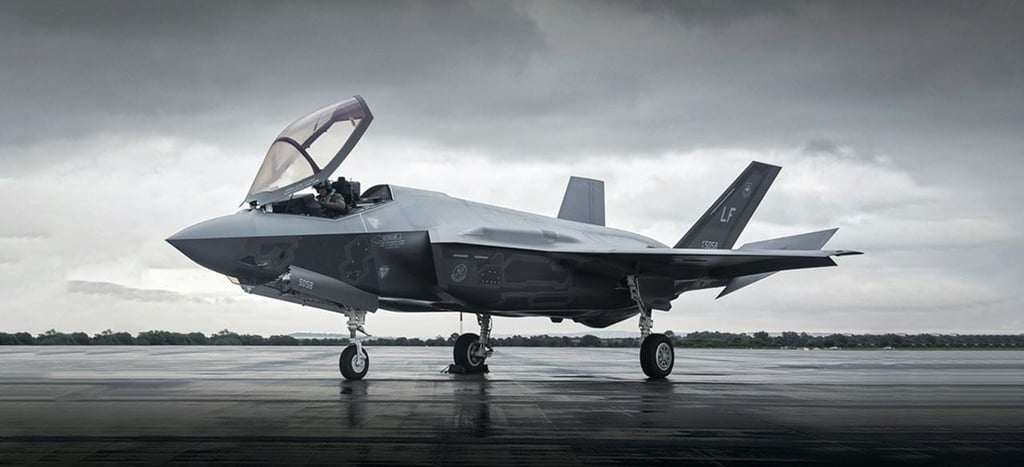

The F-35’s engine
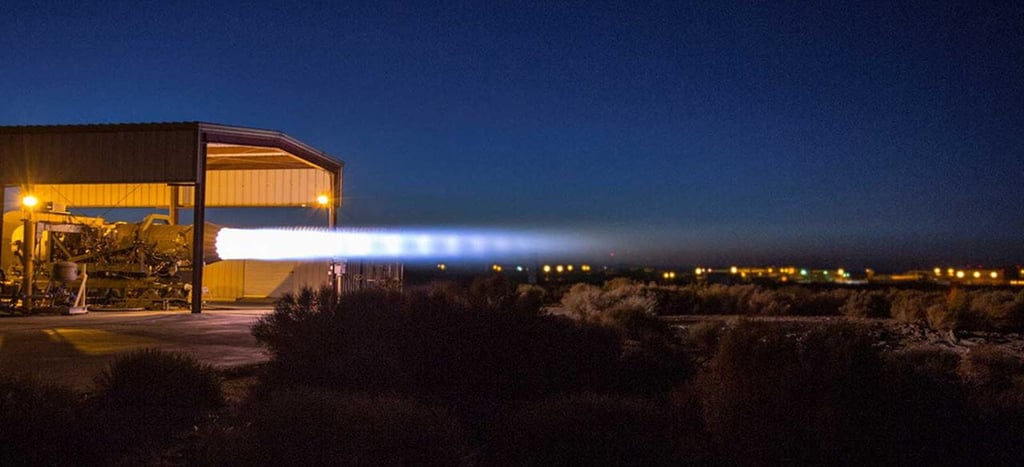

A Pratt & Whitney F135 engine performs at high-power engine run during a test at Edwards Air Force Base in California.
The F-35 gets its thrust and the bulk of its electric power from Pratt & Whitney’s F135 engine – an evolution of the F119 engine, which powers the F-22 Raptor.
The F135, known as a fifth-generation engine, has several advantages over the previous generation. It produces more thrust, it can handle heat more efficiently, and has a precise, responsive control system that relieves pilots from having to monitor multiple gauges and inputs simultaneously – and allows them to focus instead on their missions. The F135 is also built from advanced materials and has a modular design that allows for efficient and effective maintenance and upgrades.
The F-35 is still early in its service life, but the U.S. Department of Defense has already begun working on a modernization effort to ensure the fighter jet keeps pace with adversaries. That effort, known as Block 4, includes new weapons, cockpit improvements and other upgrades that would increase the demand on the engine for cooling and power – so much, in fact, that it would push the F135 far beyond its original specifications, resulting in increased sustainment costs. That means a modernized F-35 needs a modernized engine as well.
To that end, Pratt & Whitney is proposing an upgrade to the existing F135 engine called the Enhanced Engine Package, or EEP. The business’ military aviation experts point to several key benefits – mainly cost-effectiveness, low risk and a schedule that would bring Block 4 capabilities to the F-35 years sooner than a completely new engine.
In terms of affordability, Pratt & Whitney estimates EEP would save approximately $40 billion in lifecycle costs, thanks to several factors:
*It is “variant-common,” an important hallmark of the F-35 program that means it can work on all three versions of the fighter.
*It would use the existing F135 production and sustainment infrastructure, and it would maintain the current cost-share ratios for the U.S. services and international partners.
*It is production-cost neutral, meaning an upgraded F135 off the assembly line would cost the same as the current configuration.
As for low risk, EEP builds on an architecture that has already logged more than a million flight hours of safe operation between the F135 and F119. It adds no extra weight to the aircraft and requires no modifications to fit inside, making it what’s known as a “drop-in” upgrade.
And when it comes to the fast delivery schedule, EEP has an advantage because it is a retrofittable upgrade to the existing engine, with a mature supply chain, a production line running at full rate and an established maintenance network. The result would be more upgraded F135s and fully enabled Block 4 F-35 aircraft, sooner.
“With EEP, we’ve incorporated the latest technology to give pilots the capability they need, while still maintaining variant-commonality to maximize affordability,” said Jen Latka, Pratt & Whitney’s vice president for the F135 program. “And in the future, if the customer wants to bring even more capabilities into the jet, they wouldn’t need to do this again. You still have margin and headroom with EEP.”
EEP even has advantages in sustainability. It will reduce carbon dioxide emissions by 43 million tons over the life of the program and, like today’s F135, will be ready to use sustainable aviation fuels.
The F-35’s weapons
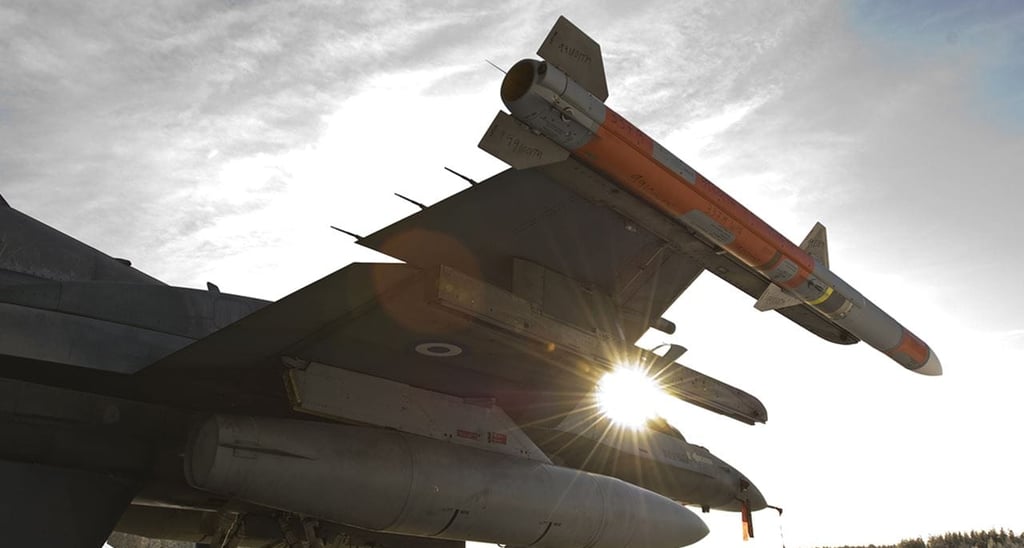

Procured by dozens of countries, the combat-proven AMRAAM air-to-air missile has been operational and integrated into the F-35, along with the F-16, F-15, F/A-18, F-22, Typhoon, Gripen, Tornado and Harrier.
One main part of the F-35’s mission is to conduct operations in hostile territory, or what military officials call an anti-access airspace denial environment, and survive whatever surface-to-air missiles or air-to-air missiles might await it. That requires stealth – the F-35 even carries its weapons internally to preserve its stealth advantage – and the ability to defeat adversaries beyond visual range. And that’s where the AMRAAM missile comes in.
A pilot flying an AMRAAM-equipped F-35 can detect, target and engage enemy aircraft at distances well beyond visual range. The missile has a semi-active radar that allows pilots to engage enemy aircraft at extreme ranges and get away before they are threatened – an advantage known as “launch and leave capability.” That, coupled with the plane’s stealthy features and advanced sensor suite, means the F-35 can defeat enemy aircraft without ever being detected.
An upgrade called F3R, or Form, Fit Function Refresh, will bring even more capability to the missile through increased range and enhanced performance against advanced threats.
“The F-35 paired with the AMRAAM preserves our first-launch opportunity against advanced threats,” Norman said. “Before they even have a track on our aircraft, our F-35 pilots are able to engage an adversary with AMRAAM and leave. This is the exact advantage our pilots need in combat and the exact capability the AMRAAM delivers.”
Another of the F-35’s missiles is the Raytheon AIM-9X Sidewinder, a shorter-range air-to-air missile that uses infrared instead of radar to detect, track and guide to a target. That helps the plane stay stealthy; fighter jets typically can sense when they’re being targeted by radar, and when they do, they alert their pilots. But with infrared targeting, there’s no such warning.
“As a fighter, if I can passively track and target and not give an adversary warning I’m there, and still employ ordnance, then I have a significant offensive advantage,” said Norman, a former F-16 pilot.
As for ground strikes, the F-35 will carry the StormBreaker smart weapon, a gliding munition with a seeker that works three different ways – millimeter-wave, which allows it to find targets in darkness and in any weather; infrared, which helps discriminate between targets, and semi-active laser, meaning it will follow the direction of a laser designator operated either from the air or on the ground.
StormBreaker is the U.S. Air Force’s first network-enabled weapon, meaning control can be transferred after launch to another fighter jet or to ground forces, which can then provide new targeting data in real time. It also has greater range than older munitions – about 40 miles – meaning an F-35 can zoom out, take a wide field of view and engage several targets at the same time.
The fighter jet also carries the Paveway laser-guided bomb, an air-to-ground precision guided munition that fulfills another of the F-35’s missions: close air support for ground forces.
One other key to the F-35’s strike capability: sometimes, it doesn’t even launch anything. The plane’s suite of radar, sensors and targeting systems essentially make it a flying sensor and battle manager, and it has even shown in tests that it can provide targeting data and guide a ground-launched missile against threats over the horizon.
The F-35’s data display
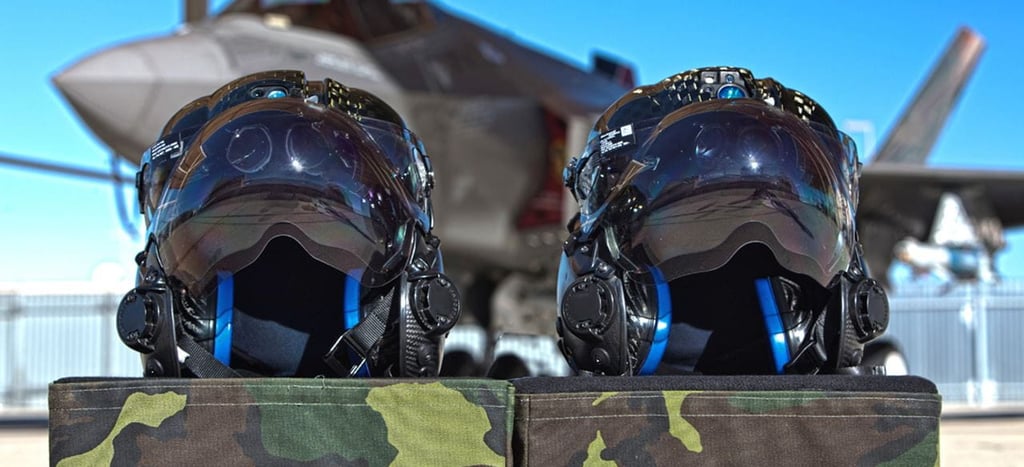

These helmet-mounted displays, made through a joint venture between Collins Aerospace and Elbit Systems of America, help F-35 pilots understand the airspace around them.
One big difference between the F-35 and the planes it’s replacing is the way pilots see data from radars, targeting systems and other sensors.
Historically, fighter jets have used a head-up display – a clear piece of glass atop the instrument panel with a projector that overlays information about whatever is in front of it. With that, pilots can tell all kinds of things about their mission, including where the nose of the plane is pointing, how far away a target or waypoint is and which weapons are available.
With the F-35, the head-up display is integrated into the visor of the pilot’s helmet. The information is no longer available in only one place; it moves with the pilot’s gaze.
“You have it right there in front of you, regardless of where you’re looking – out the window, over your shoulder, down – you’re looking through the aircraft, so to speak,” said Bret Tinkey, who manages helmet programs at Collins Aerospace. “It’s all in front of you, all the time.”
Feeding into that display is one of the F-35’s most important and most revolutionary features: the network of sensors spread out across its airframe. Those sensors, called the Electro-Optical Distributed Aperture System, allow an F-35 pilot to see in any direction at any time – a major improvement over the fixed sensors on older fighters.
“The way it’s been classically, you’re frequently maneuvering your jet to receive full defensive threat coverage. Or you have a formation and one of you concentrates on one sector, while the other aircraft concentrates on another,” said Russ “Rudder” Smith, a retired U.S. Air Force colonel who now leads business development for tactical electro-optical and infrared systems at Raytheon Intelligence & Space. “With 360-degree awareness, it obviates the need for maneuvering your aircraft or formation to see the entire operating picture. You can do it all through one system.”
The sensors use two key components from across Raytheon Technologies. The strained-layer super-lattice detector material comes from Raytheon Missiles & Defense, which procures it for use in ground radars, and the focal plane arrays come from Raytheon Vision Systems in Goleta, California. Those advancements, coupled with digital pixel technology and a digital read-out integrated circuit, give pilots a quick, high-definition picture of everything around them, Smith said – “in short, a more capable missile detection system.”
The F-35’s landing system

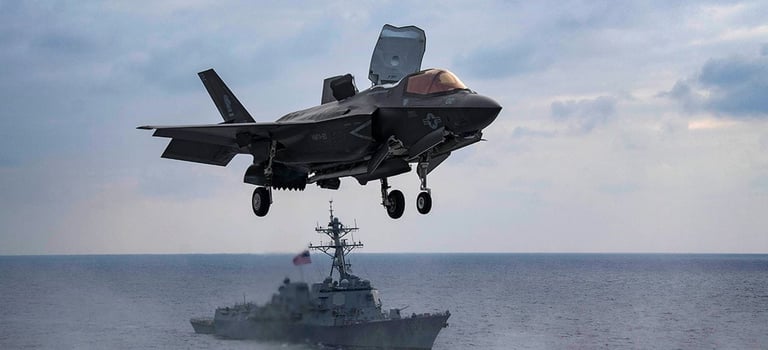
An F-35-B Lightning II assigned to marine Fighter Attack Squadron (VFMA) 121 takes off from the amphibious assault ship USS Wasp (LHD 1). Photo by Mass Communications Specialist 1st Class Daniel Barker/Released.
Let’s go back to one of the F-35’s most important requirements: The military needs it to be a “low-observable” aircraft, meaning it has to be very hard for adversaries to detect. Doing that in flight is one thing, but when you’re talking about landing it in contested territory, it’s even harder. Aircraft typically rely upon surface radars and legacy instrument landing systems when they’re required to penetrate weather for landing. The radars and instrument landing systems emit energy that adversaries can detect, which puts aircraft and landing locations at risk.
So what do you do in that case? You use a secure encrypted data link instead. That’s the job of the Joint Precision Approach and Landing System, also known as JPALS. It goes on all three variants of the F-35, giving them a way to land on ships at sea, as well as temporary airfields in remote locations, in just about any weather. Raytheon Intelligence & Space builds the ground stations.
With JPALS, naval commanders can launch aircraft in all kinds of conditions, knowing they’ll be able to return and land once the mission is over. It also saves fuel, preventing pilots from having to loiter and refuel until landing conditions are more favorable.
“It gives them options, and it gives the pilot a sense of security, knowing they’re coming back home,” said retired U.S. Navy Rear Adm. CJ Jaynes, who now works at Raytheon Intelligence & Space as an executive technical advisor.
On land, JPALS basically gives ground forces an instant airport – it can be set up quickly and in the most austere locations, which opens up all kinds of tactical options.
“Think about special ops," Jaynes said. "You go in, you get out.”
